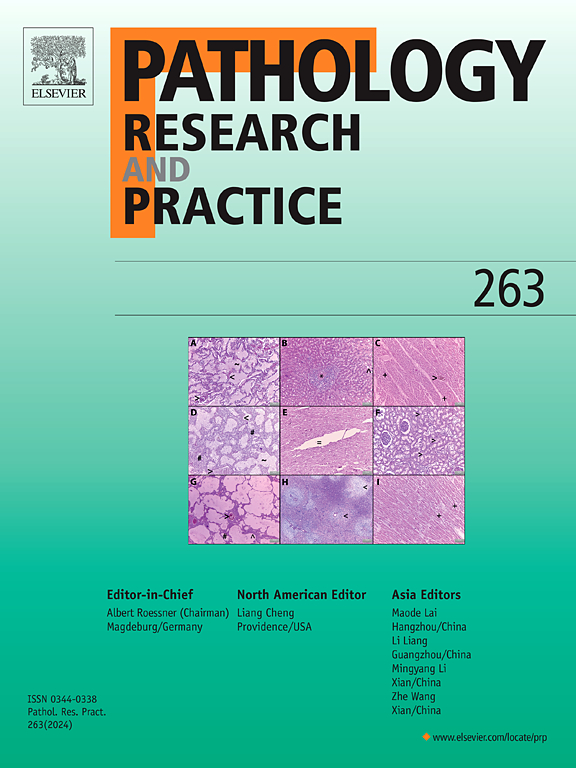Clinicopathological analysis of anti-VEGF drug-associated renal thrombotic microangiopathy: A case series and review of the literature
IF 2.9
4区 医学
Q2 PATHOLOGY
引用次数: 0
Abstract
Anti-vascular endothelial growth factor-associated thrombotic microangiopathy (aVEGF-TMA) was recently discovered in patients with malignant tumors. Four aVEGF-TMA patients diagnosed by renal biopsy between 2018 and 2022 were identified, and all were females aged 30–62 years (mean age, 47 years). Two patients with malignant gastrointestinal stromal tumors who received sunitinib were analyzed. One patient was treated with bevacizumab plus regorafenib, which has never been reported before. Another patient had lung adenocarcinoma with multiple metastasis and was treated with bevacizumab. Proteinuria was often the first symptom, and the mean onset time was 23.25 months (7–36 months). Renal function was decreased in all patients, and nephrotic syndrome, hematuria, hypertension and anemia were present in some patients. Microscopically, both bevacizumab-TMAs and sunitinib-TMAs presented thrombi within dilated capillaries, mesangiolysis, double counters of the glomerular basement membrane and effaced or fused foot processes. Glomerulosclerosis and endothelial cell injury occurred in only some patients. Positive IgM deposits were observed in all aVEGF-TMAs, but IgA and C3 deposits were observed only in bevacizumab-TMAs. CD34 expression was absent around dilated capillaries containing thrombi, and immunostaining for fibrin/fibrinogen was positive; however, CD61 staining was negative in all patients. Thus, fibrin thrombi were suggested to be present in aVEGF-TMA. The mean follow-up time after renal biopsy was 19.5 months (range 14–32 months). One patient continued sunitinib treatment and eventually progressed to permanent dialysis, but tumor progression was controlled. The other three patients developed drug resistance, two patients discontinued aVEGF medication, and proteinuria decreased significantly. Notably, one patient recovered 14 months after withdrawal. The other patient who continued bevacizumab treatment had persistent proteinuria, and the tumor still progressed. In summary, renal function needs to be monitored in patients with malignant tumors who are receiving aVEGF drug treatment, especially females. Timely termination of related aVEGF administration after comprehensive assessment could alleviate their clinical symptoms.
Data Availability
Data are available from the corresponding Author upon reasonable request.
求助全文
约1分钟内获得全文
求助全文
来源期刊
CiteScore
5.00
自引率
3.60%
发文量
405
审稿时长
24 days
期刊介绍:
Pathology, Research and Practice provides accessible coverage of the most recent developments across the entire field of pathology: Reviews focus on recent progress in pathology, while Comments look at interesting current problems and at hypotheses for future developments in pathology. Original Papers present novel findings on all aspects of general, anatomic and molecular pathology. Rapid Communications inform readers on preliminary findings that may be relevant for further studies and need to be communicated quickly. Teaching Cases look at new aspects or special diagnostic problems of diseases and at case reports relevant for the pathologist''s practice.

 求助内容:
求助内容: 应助结果提醒方式:
应助结果提醒方式:


